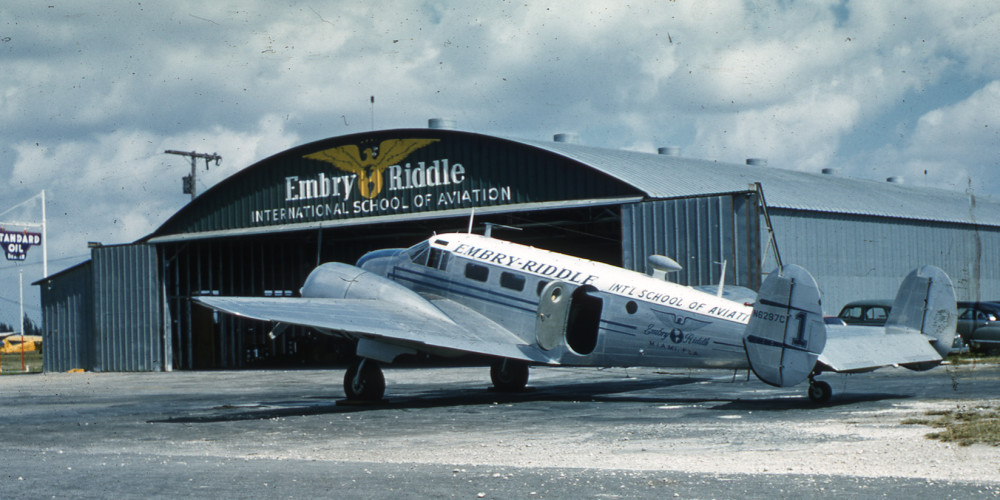It was October 1961, the night before my graduation from Embry-Riddle’s Airframe & Powerplant (A&P) Technician course in Miami. Several classmates thought we should leave a class memento, so we assembled a life-sized, stuffed dummy with jeans, shirt and a hat, dangling a few beer cans tied on with string; and it was hoisted up the flagpole facing 27th Avenue. Then Embry-Riddle President Isabel McKay might well have been the first person to see it from her penthouse in the Aviation Building the next morning. The “several classmates” quickly dissolved into one other student and me, and we were promptly invited to Mrs. McKay’s residence. We could see our young lives flash before us, until she accepted our apology and allowed us to graduate.
I came to Embry-Riddle 16 months earlier from Massachusetts. After a month in the dorm, I rented a house with two students: one from Greece and the other from Lebanon. About 15 percent of our class was international students. My saddest time at Riddle was when my Lebanese friend died in a Miami hospital from a misdiagnosed ruptured appendix.
Every month or so we would have mixers. Some were straight-laced dancing events at Barry College for Women in Miami Shores, now Barry University. We mixed better with the students at Miami’s Jackson Memorial Hospital School of Nursing. They would host us on the flat hospital roof with a record player for dancing and the romantic Miami skyline as a backdrop.
Crandon Park at nearby Biscayne Key had a segregated beach at the time. Some weekends there were peaceful “swim-ins” and it would make the local headlines. During that time, I had a black student friend, Sidney Meyers, from Jamaica. One day, six to eight of us went up to Hallandale Beach for a swim. Boys being boys, Sidney and I started wrestling on the sand. After a few minutes, he had me well-pinned and I gave up. As I stood up, I noticed a few other people had gathered around, perhaps thinking it was a racial incident. Of course it was not, just two friends horsing around.
One night, a classmate, Harold Hernandez, and I went to the Miami International Airport (MIA) terminal and rang the tower buzzer. A voice over the speaker responded, and we said we were Embry-Riddle students and wanted to come up and look around. We were acknowledged, “Come on up,” and buzzed in, and we climbed the stairs to witness the spectacle of MIA’s tower operation at night. We were in heaven.
After graduating, Harold and I got jobs at Avex, a Fixed Base Operator (FBO) at the original Tamiami Airport. On our first day, the manager led us out the back door where a Twin Beech was sitting on the grass. He said, “We have to paint this airplane; you guys have to sand it.” Our introduction to the world of aviation mechanics began with hand sanding a Twin Beech for about a week or so.
My career at the FBO lasted two months at most. I had matured enough to recognize that family was important, so I returned to Massachusetts to do logging and sawmill work.
At Embry-Riddle I came to appreciate the order of magnitude difference in aviation mechanic disciplines, compared with the work I had completed in shop class at high school, or the maintenance on my 1928 Model A Ford. I learned that study and perseverance are needed to accomplish one’s goals. The vehicles and power equipment used in harvesting, drying, milling and selling lumber need proper care as well, and after completing my A&P, I had new confidence in my skills. To this day, I call into use bits of knowledge that I absorbed at Embry-Riddle. I sure did get my money’s worth! I eventually became manager of the family lumber business, which my son now runs.
All things change, and we with time, but my Embry-Riddle experience was a very valuable asset in understanding life, people and myself over the years.
Editor’s Note: Mann resides in Sarasota, Fla., with his wife, Sandra Trivino. He has three adult sons. For the past eight years he has worked part time as a building supervisor.
